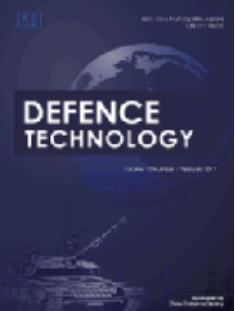Experimental and numerical approach of afterburning effects in fuel-rich explosives within confined spaces
IF 5.9
Q1 ENGINEERING, MULTIDISCIPLINARY
引用次数: 0
Abstract
The detonation of fuel-rich explosives yields combustible products that persistently burn upon mixing with ambient oxygen, releasing additional energy through a phenomenon known as the afterburning effect. This process greatly influences the evolution of confined blast loading and the subsequent structural response, which is crucial in confined blast scenarios. Given the complex nature of the reaction process, accurate analysis of the afterburning effect remains challenging. Previous studies have either overlooked the mechanisms of detonation product combustion or failed to provide experimental validation. This study introduces a three-dimensional model to effectively characterize the combustion of detonation products. The model integrates chemical reaction source terms into the governing equations to consider the combustion processes. Numerical simulations and experimental tests were conducted to analyze the combustion and energy release from the detonation products of fuel-rich explosives in confined spaces. Approximately 50% of the energy was released during the combustion of detonation products in a confined TNT explosion. Although the combustion of these products was much slower than the detonation process, it aligned with the dynamic response of the structure, which enhanced the explosive yield. Excluding afterburning from the analysis reduced the center-point deformation of the structure by 30%. Following the inclusion of afterburning, the simulated quasi-static pressure increased by approximately 45%. Subsequent comparisons highlighted the merits of the proposed approach over conventional methods. This approach eliminates the reliance on empirical parameters, such as the amount and rate of energy release during afterburning, thereby laying the foundation for understanding load evolution in more complex environments, such as ships, buildings, and underground tunnels.
富燃料炸药在密闭空间内加力效应的实验与数值研究
富燃料炸药的爆炸产生可燃产物,这些可燃产物与周围的氧气混合后持续燃烧,通过一种称为加力燃烧效应的现象释放出额外的能量。这一过程极大地影响了约束爆炸荷载的演变和随后的结构响应,这在约束爆炸场景中是至关重要的。鉴于反应过程的复杂性,对加力效应的准确分析仍然具有挑战性。以往的研究要么忽视了爆轰产物燃烧的机理,要么未能提供实验验证。本研究引入三维模型来有效表征爆轰产物的燃烧。该模型将化学反应源项集成到控制方程中以考虑燃烧过程。通过数值模拟和试验分析了富燃料炸药在密闭空间内的燃烧和爆轰产物的能量释放。在密闭TNT爆炸中,大约50%的能量是在爆轰产物燃烧过程中释放的。虽然这些产物的燃烧比爆轰过程慢得多,但与结构的动态响应一致,从而提高了爆炸当量。在分析中排除加力燃烧后,结构的中心点变形减少了30%。加入加力燃烧后,模拟准静压提高了约45%。随后的比较突出了所提出的方法优于传统方法的优点。这种方法消除了对经验参数的依赖,如加力燃烧过程中能量释放的数量和速率,从而为理解更复杂环境(如船舶、建筑物和地下隧道)中的载荷演变奠定了基础。
本文章由计算机程序翻译,如有差异,请以英文原文为准。
求助全文
约1分钟内获得全文
求助全文
来源期刊

Defence Technology(防务技术)
Mechanical Engineering, Control and Systems Engineering, Industrial and Manufacturing Engineering
CiteScore
8.70
自引率
0.00%
发文量
728
审稿时长
25 days
期刊介绍:
Defence Technology, a peer reviewed journal, is published monthly and aims to become the best international academic exchange platform for the research related to defence technology. It publishes original research papers having direct bearing on defence, with a balanced coverage on analytical, experimental, numerical simulation and applied investigations. It covers various disciplines of science, technology and engineering.
 求助内容:
求助内容: 应助结果提醒方式:
应助结果提醒方式:


